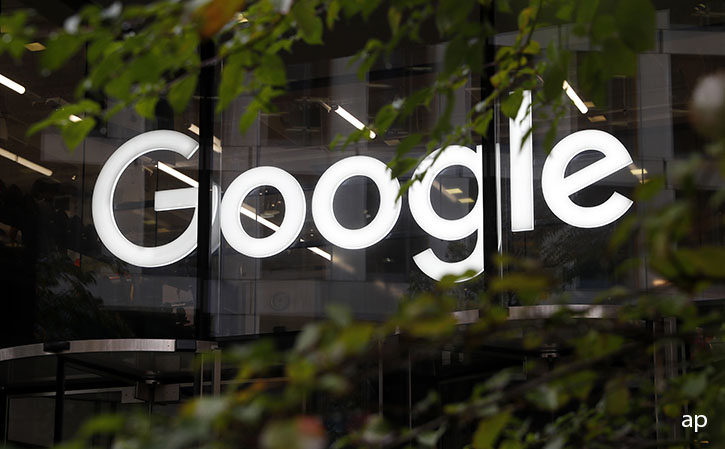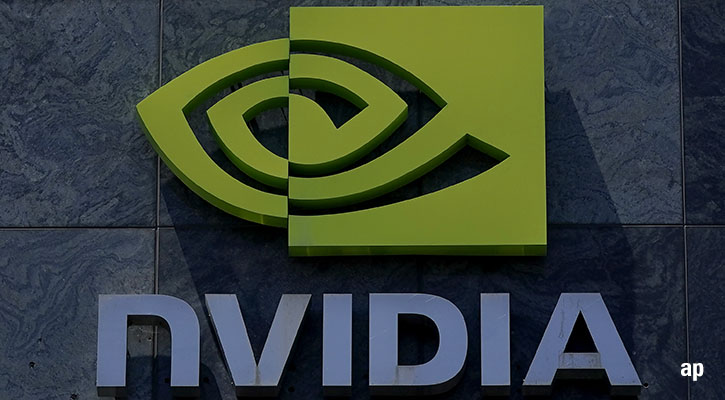
Key Morningstar Metrics for Alphabet
- Fair Value Estimate: $237
- Morningstar Rating: 4 stars
- Morningstar Economic Moat Rating: Wide
- Morningstar Uncertainty Rating: Medium
What We Thought of Alphabet’s Earnings
Why it matters: We saw Alphabet’s GOOGL fourth-quarter earnings as further evidence of its sound artificial intelligence strategy, with the firm leveraging AI in its core advertising business as well as capitalizing on AI spending via Google Cloud.
- While advertising demand was seasonally strong, with ad sales up 11% year over year, we were particularly impressed by the firm’s commentary on AI Overview monetization, which is approximately at par with traditional search monetization despite its launch just a few months ago.
- Google Cloud’s revenue growth decelerated to 30% annual growth from 35% in the previous quarter. We attribute this deceleration primarily to Google Cloud being capacity-constrained (similar to Microsoft Azure). Once new capacity comes online in 2025, we forecast growth to inflect upward.
The bottom line: We raise our fair value estimate for wide-moat Alphabet to $237 per share from $220 as we bake in the firm’s strong fourth-quarter top line, which was well ahead of our prior estimate, as well as a reacceleration of Google Cloud sales as more capacity comes online in 2025.
- Shares traded down after hours as investors were likely left unimpressed by the cloud deceleration. We see this selloff as a buying opportunity and continue to view Alphabet’s full-stack approach to AI—which includes infrastructure, software, applications, and ads—as a solid long-term strategy.
- On the margin front, we believe Alphabet’s operating margins will likely stay flat at 32% over the next five years as depreciation charges from investments in AI offset any efficiency gains or headcount/real estate optimizations that the firm is planning.
Alphabet Stock vs. Morningstar Fair Value Estimate
Source: Morningstar Direct. Latest price as of 1:15 AM ET.
Google Search, Ai Overviews
Diving deeper into Alphabet’s segment-level results, Google Search revenue expanded 13% year over year. While the US presidential election and the holiday season provided the fourth quarter with a nice uplift, we were also impressed by Alphabet leveraging its AI investments to augment the search experience. One key example of this cross-pollination of AI investments was the firm’s new Shopping section within Google Search that was upgraded last quarter with extensive use of AI in the rebuilding process. The new Google Shopping segment yielded 13% more daily active US users in December 2024 as compared with the same month a year earlier.
We were also encouraged to hear that users, particularly those in younger cohorts, that leverage AI Overviews end up using Google Search more, with usage growth increasing over time. This dynamic of AI Overviews being additive to Google Search stands at odds with the market narrative of generative AI being the death knell for traditional search.
We reiterate our view that while we expect certain queries, especially those of a research/informational tilt, to gradually move away from Google Search, the main moneymakers (queries that have underlying commercial intent) for Alphabet are unlikely to swiftly switch over to generative AI-powered chatbots. We believe the current slate of AI-powered chatbots is not geared for commercial-intent queries and will take time to build out Google-esque features, such as Images, Videos, Shopping, Travel, and so on, that seek to catalyze and capture users' commercial intent.
YouTube Ad Sales Impress, TikTok Boosts
Looking at YouTube, we were impressed by the business' 14% year-over-year advertising sales growth. Similar to Google Search, some of the upside was driven by seasonality/the US presidential election. At the same time, we like the YouTube Shorts monetization story, with Shorts' monetization rate relative to regular long-form video increasing by more than 30% in the US in 2024. We continue to view Shorts, as well as Meta’s Instagram Reels, as well-positioned to monetize short-form videos. Further, if a potential TikTok ban ends up being enforced in the US, we believe Shorts and Reels would be the biggest beneficiaries of such a ban, with both products being clear TikTok substitutes.
On the generative AI side, we continue to remain optimistic about Alphabet being able to leverage its video and image generation models (Veo and Imagen) to empower creators on YouTube to create/edit more engaging content. Alongside providing creators with more tools to generate content, Alphabet’s investments in AI also stand to improve the firm’s advertising business via better ad targeting, ad pricing, and content recommendations. Management highlighted that Alphabet’s AI-powered video campaigns on YouTube delivered 17% higher return on ad spending to advertisers versus traditional manual campaigns. As Alphabet scales its AI investments out, we see a clear monetization path via the augmentation and improvement of its advertising business.
Google Cloud Sales
Moving over to Google Cloud, sales from the segment grew 30% year over year to $12 billion in the quarter. While the Google Cloud sales were slightly behind our prior forecast, we attribute the minor miss to the capacity constraints faced by Alphabet, with demand for its cloud computing infrastructure outstripping current supply. Management expects a more balanced supply/demand dynamic in 2025 as more data center supply comes online. While investors were likely left underwhelmed by the headline Google Cloud growth number, we’d posit a few key points that investors should keep in mind when thinking about Google Cloud’s future revenue trajectory.
First, Google Cloud sales house both GCP, which is Alphabet’s cloud infrastructure business, as well as Google Workspace, which is Alphabet’s productivity tools suite. Management highlighted that GCP, the business that investors care about more, grew at a significantly higher pace than the 30% implied in the overall Google Cloud growth rate. According to our estimates, GCP constitutes more than three-fourths of the overall Google Cloud business, and we estimate that GCP likely grew more than 35% as a stand-alone unit in the fourth quarter.
Second, we’d ask investors to pay attention to developer adoption of Gemini and Vertex AI, Alphabet’s AI development platform. The number of developers using Alphabet’s large language models, or LLMs, more than doubled in the last six months to 4.4 million and Vertex AI’s usage is up around 20 times last year’s usage. Such traction, coupled with the capacity constraints management highlighted, shows that developers building AI applications are generally trusting of/excited about Alphabet’s AI offerings, therefore dispelling this narrative of Alphabet being an AI laggard.
Alphabet’s AI chops are also on display on third-party leaderboards, such as Chatbot Arena, a leaderboard created by UC Berkeley researchers, where developers and users can rank LLMs versus one another. While Alphabet had struggled to place in the top tier for most of 2024, the firm’s recent model launches in December and January have propelled its models, with three out of the top five models currently at the top of the leaderboard being Alphabet’s.
Third, while sales growth is certainly more important, we’d remind investors that alongside the 30% year-over-year sales growth, Alphabet also expanded Google Cloud’s operating margins to 18% in the fourth quarter, up from 9% a year ago. We continue to see plenty of operating leverage in Google Cloud’s margins and project the segment’s margins to inflect upward toward the mid-20% range over the next five years.
Monetizing AI, China Antitrust Probe
More broadly, we reiterate our view that Alphabet’s ability to monetize its AI investments across infrastructure, software, applications, and advertising materially weakens the argument that labels the firm’s capital expenditures as overbuilds. While 2025’s $75 billion capital expenditure forecast exceeded our expectations, we believe the firm can actually monetize this investment throughout its businesses mentioned above, as well as other areas such as Waymo and Pixel smartphones. On capital intensity—that is, capital expenditures divided by sales—we believe 2025 will be a peak, with capital intensity trailing downward in years 2026 onward.
Finally, while management didn’t comment on the news that China is opening an antitrust probe into Alphabet’s activities in China, we believe such an action could potentially even be a positive for the firm. With China and the US locking horns, China’s targeting of US technology may pressure the US government to tone down its own antitrust cases against Alphabet.
On the US antitrust concerns, we reiterate our opinion that the antitrust cases against Alphabet have a range of possible outcomes, with the range tilting favorably for the firm with the new US administration taking charge. In the vast majority of these outcomes, we see Alphabet being able to protect its core business without suffering any material value destruction. The true value-destructive scenarios—such as a breakup of Google and/or punitive restrictions on the firm’s ability to compete in the search market—are likely off the table with the new administration, in our view.
The author or authors do not own shares in any securities mentioned in this article. Find out about Morningstar's editorial policies.
























